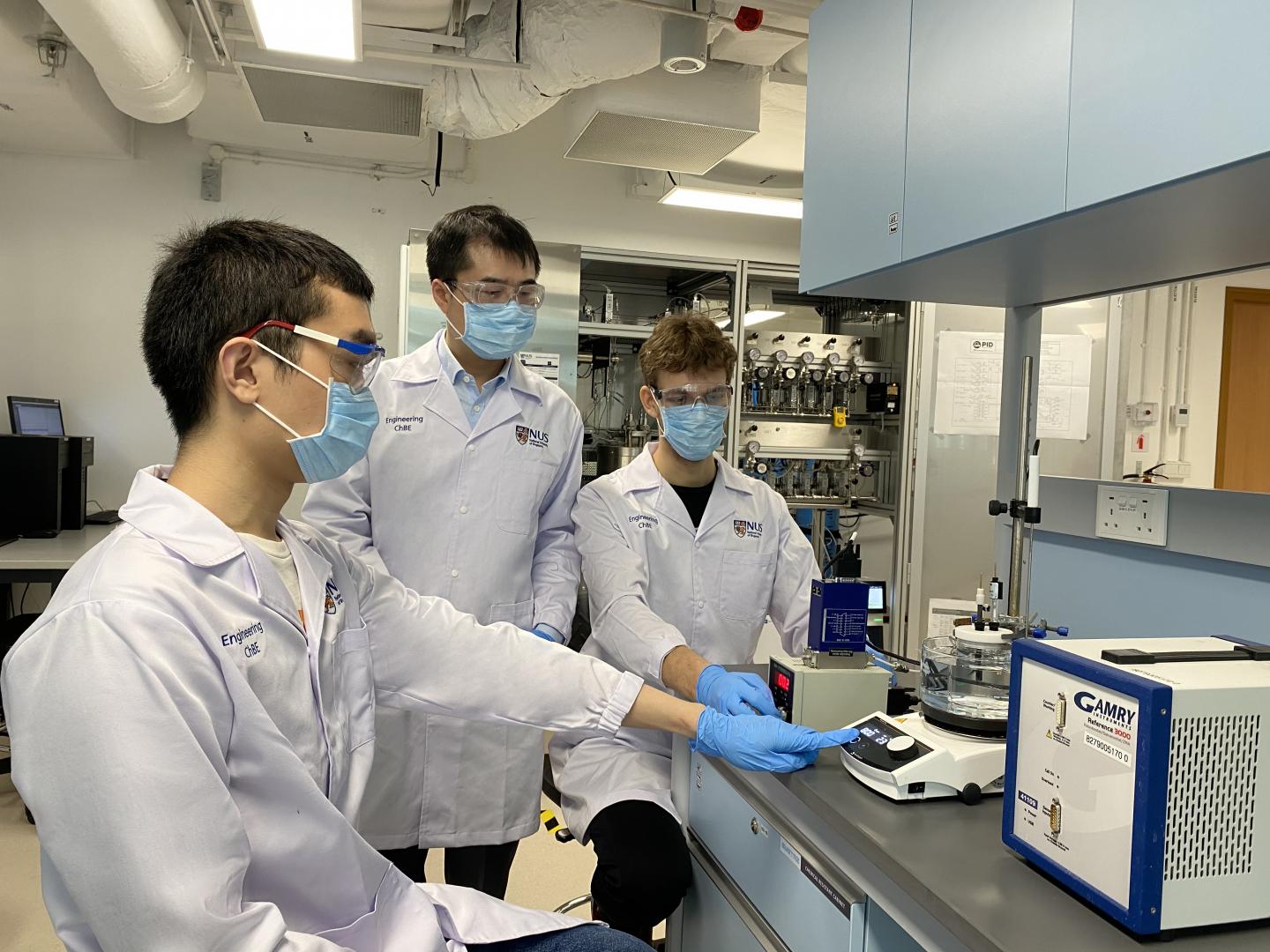The research team used oscillating electric potentials to increase the rate of hydrogenation on typical commercial catalysts

Credit: National University of Singapore
Everything from the production of fertilisers and plastics, to liquid fuels and pharmaceuticals require an important chemical reaction known as hydrogenation. This is a process involving the addition of hydrogen to unsaturated chemical bonds. Enhancing the rate of hydrogenation can lead to higher yields for industries and lower environmental impacts.
Now, a team of scientists, led by Associate Professor Yan Ning from the Department of Chemical and Biomolecular Engineering at the National University of Singapore (NUS), has come up with a method to increase the rate of ethylene hydrogenation by more than five times compared to typical industrial rates.
The team achieved this using a radically different approach. Unlike most current hydrogenation processes that use a static solid catalyst to speed up the reaction, the technique developed by NUS researchers applies oscillating electric potentials to a commercial hydrogenation catalyst, which then dramatically increased the hydrogenation rate of ethylene to ethane.
“Such enhancements in the rates or selectivity of chemical reactions are instrumental in making a chemical process more efficient. Our work demonstrates a more direct and cost-effective way of optimising catalyst performance that is beyond conventional methods,” Assoc Prof Yan said.
The team’s groundbreaking work was published in JACS Au on 14 April 2021.
Enhancing hydrogenation catalysis with oscillating electric potentials
Most hydrogenation catalysts have been developed over many centuries, but the development of new catalysts has been typically limited to conventional material design approaches. A few studies have shown that catalysis can be promoted by applying electric potentials to the catalyst. While these methods have already improved the selectivity and activity of heterogeneous catalysts under static conditions, the use of dynamic external stimuli has been underexplored.
The new findings by the NUS team offer an advanced engineering tool using oscillating electric potentials to promote the rate of chemical reactions without the development of new catalytic materials.
To achieve this, the NUS team carried out experiments using a commercial palladium catalyst in a laboratory-scale electrochemical reactor, and observed a rate enhancement of five times under optimal dynamic conditions. They managed to correlate the rate enhancement with the double-layer capacitance – an indicator of the local electric field strength at the catalyst-electrolyte interface – by using different electrolyte solutions. The properties of the catalyst changed periodically and continuously, which sped up the steps involved in the ethylene hydrogenation reaction.
The researchers conducted further kinetic experiments, which suggested that the enhancement could be related to the partial removal of strongly adsorbed hydrogen from the catalyst surface at a negative potential, and the subsequent adsorption and hydrogenation of ethylene at a positive potential.
The team’s findings illustrate the feasibility of using oscillating potentials to improve the catalytic rate of a relatively simple hydrogenation reaction. A similar approach could be extended to control the activity and selectivity of a wide range of catalytic reactions.
Next steps
The NUS team is conducting more studies to improve their understanding of the fundamental principles behind their new technique. They are also looking to further develop their approach into a general strategy for enhancing catalysts beyond their ‘static optimum’.
###
Media Contact
Denise Yuen
[email protected]
Original Source
http://news.
Related Journal Article
http://dx.





